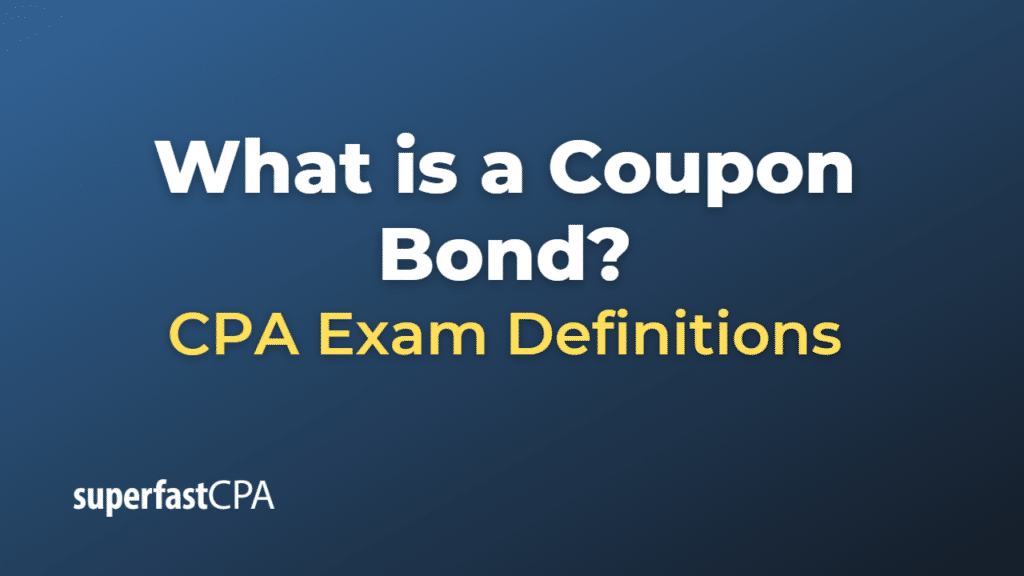Coupon Bond
A coupon bond, also referred to as a bearer bond, is a type of bond that is not registered in the investor’s name and has a section of “coupons” attached. Each coupon represents a period’s (usually semi-annual) interest payment. The bondholder receives the interest by stripping off the coupons and depositing them in a bank or sending them to the bond issuer for payment.
Here’s a simplified example of how it works:
Let’s say you buy a $1,000 bond with an annual coupon rate of 5%. This bond would come with 20 coupons attached (assuming it’s a 10-year bond and interest is paid semi-annually). Every six months, you would detach one of the coupons and redeem it for $25 (which is 0.5 * 5% * $1,000). At the end of the 10 years, you would redeem the bond itself for its face value of $1,000.
Please note that coupon bonds, in the traditional bearer format with physical coupons, are now quite rare, as most bonds are issued electronically in a ‘book-entry’ format. However, the terms “coupon” and “coupon rate” are still commonly used to refer to the periodic interest payments on a bond.
Example of a Coupon Bond
Imagine that you invest in a 10-year bond with a face value of $1,000 and an annual coupon rate of 6%. This bond pays interest semi-annually, meaning twice per year.
The annual interest on this bond would be $60 (6% of $1,000). Since the bond pays interest semi-annually, you would receive $30 every six months.
Each of the 20 “coupons” attached to the bond (10 years * 2) would be worth $30. Every six months, you would detach a coupon and redeem it with the bond issuer to receive your interest payment.
At the end of the 10-year period, you would redeem the bond itself and receive back the initial $1,000 that you invested.
This is a simplified example and assumes that the bond is held to maturity and the issuer does not default. In reality, the price of a bond can fluctuate on the secondary market due to changes in interest rates, credit quality of the issuer, and other factors. Also, as previously mentioned, most modern bonds are electronic and do not physically have coupons; however, the terminology and calculation methods are still used.













